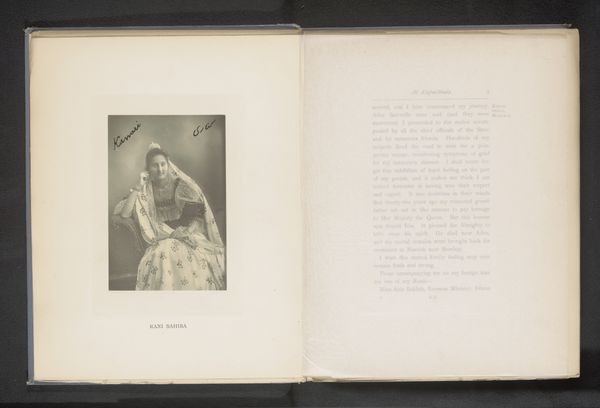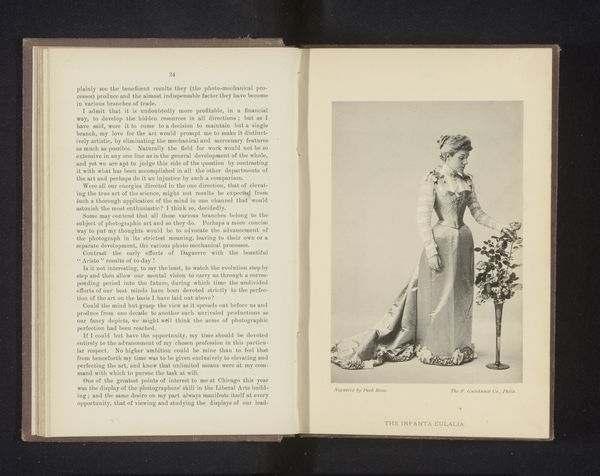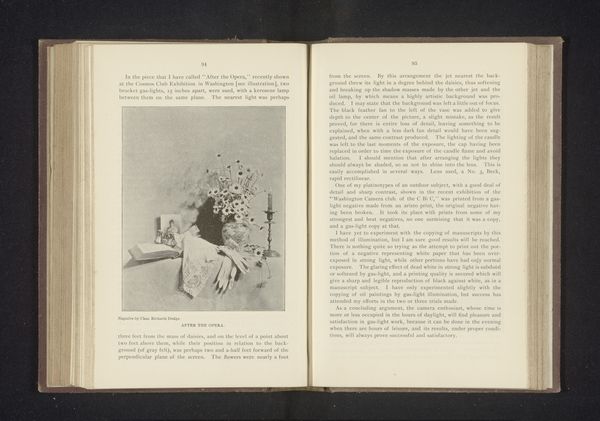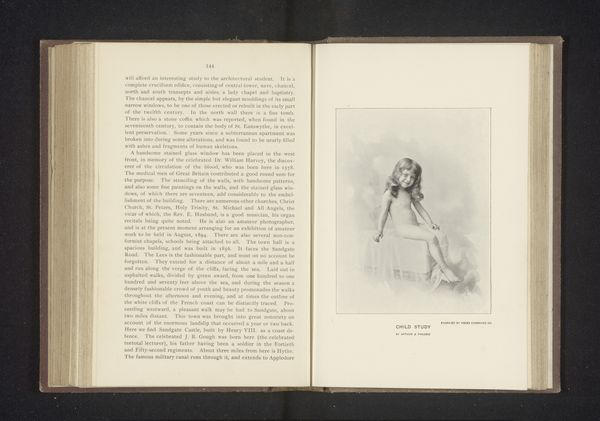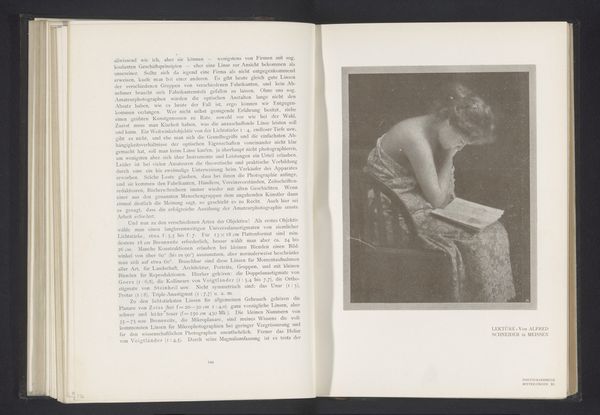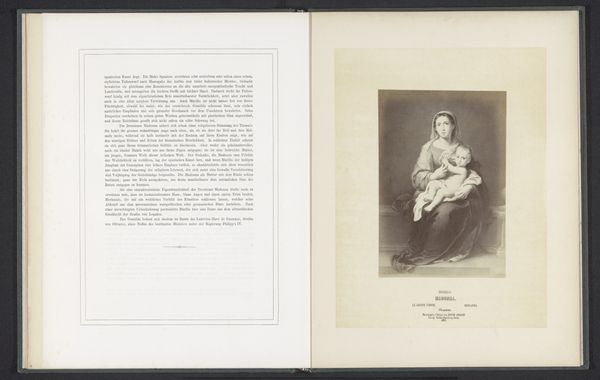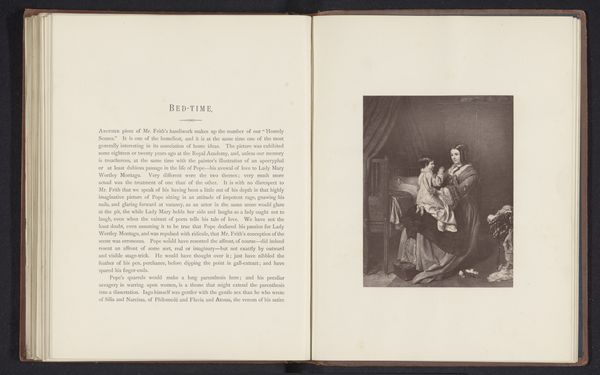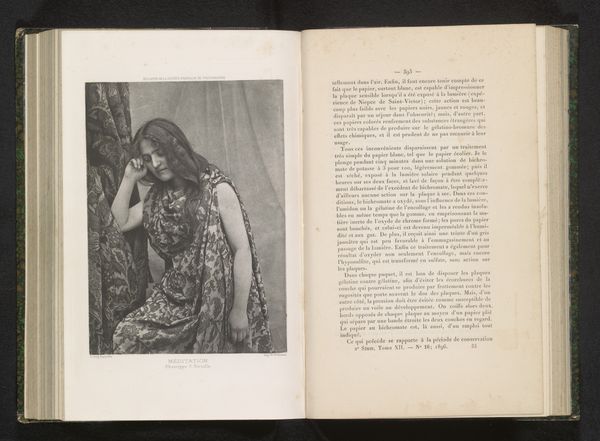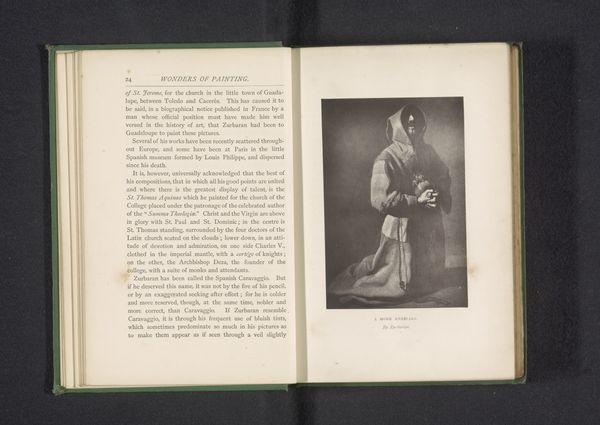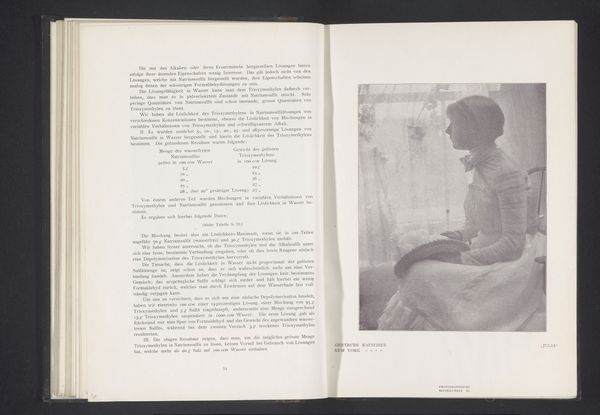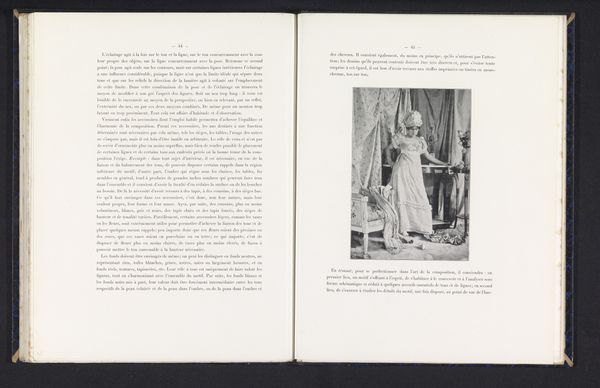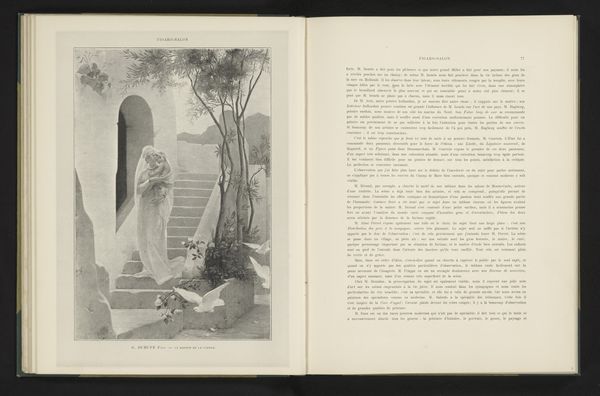
Dimensions: height 176 mm, width 111 mm
Copyright: Rijks Museum: Open Domain
Editor: So, here we have "Portret van een onbekende vrouw op een ijsberenvel" – Portrait of an unknown woman on a polar bear skin – dated before 1899. It's an albumen print, a photographic process from way back then. I’m immediately struck by the rather theatrical presentation. The woman almost seems staged, draped over this...rather unfortunate polar bear. What do you see in it? Curator: It’s definitely staged, and that's key to understanding it. Consider the context: late 19th-century portraiture was deeply intertwined with performance and social posturing. Photography, still relatively new, was quickly becoming a tool for constructing identity. The polar bear skin isn’t just a prop; it’s a potent symbol of wealth, exoticism, and colonial power. Does it strike you as an extension of her own character? Editor: Interesting. I hadn't really thought about the colonial aspect. I saw it more as… almost absurd, like an early form of celebrity photoshoot gone slightly off the rails. But now that you mention it, the polar bear skin *is* a very specific choice. It brings with it a whole history. Curator: Precisely. Think about who is likely consuming this image. What would their assumptions be about the woman and about the world being presented to them? The photograph isn't simply a representation; it is actively participating in constructing and reinforcing those socio-political structures. The woman in this print, posed on the bear, isn't so far from our contemporary notions of celebrity; her portrait serves to communicate class, aspirations and social roles in her community. Editor: That definitely gives me a new perspective on it. I was focused on the aesthetic, the almost performative romance, but missing the broader power dynamics at play. Curator: The personal *is* political, even then. That's something to remember when looking at historical works, or frankly any art. Editor: Right! Thanks, that's incredibly helpful. I'll definitely keep that in mind when looking at portraiture from this period. Curator: Excellent. Hopefully you've learned more about how visual language becomes implicated in systems of power.
Comments
No comments
Be the first to comment and join the conversation on the ultimate creative platform.
